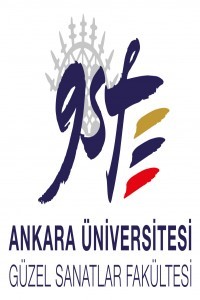Gallery Review - Visualising An Ancient Legend: The “Troy: Myth And Reality Exhibition” At The British Museum
Troia Savaşı’nın farklı dönemlerdeki yansımalarından oluşan ve BP (British Petrol) tarafından desteklenen Troy: Myth and Reality sergisi, British Müzesi tarafından 21 Kasım 2019 ve 8 Mart 2020 tarihleri arasında organize edilmiştir. Üç bölümlü serginin ilk bölümü, daha çok Homer tarafından destansı iki şiirde, İlyada ve Odysseia’da anlatılan Troia Savaşı ve olaylarının ebedi tragedyasına, mite ayrılmıştır. Savaşla ilgili dört ana tema, ihtilaf – Έρις, Savaş – Πόλεμος, Düşüş – Άλωσις ve Geri Dönüş – Νόστος ilk bölümü oluşturur ve günümüzde büyük çoğunluğu Türkiye sınırları içerisindeki kuzeybatı Küçük Asya’da konumlanan Troia Arkeolojik Alanı’nda, Hisarlık’ta, bulunan eserlerle birlikte antik efsaneyi görselleştirir. İkinci bölüm, küçük bir alanda daha fazla eser sergilemek amacıyla bir rotunda içine yerleştirilmiştir ve daha çok 19. yüzyılda Hisarlık’taki ilk “kapsamlı” kazıları gerçekleştiren, Alman iş adamı ve sansasyonel amatör arkeolog Heinrich Schliemann’a adanmıştır. Londra sergisinin üçüncü bölümünde, modern sanat eserleri ve tartışmalı “Suriye’nin Kraliçeleri” adlı video klibi de içeren Troia Savaşı’nın çağdaş yorumlamalarıyla birlikte, Troia hikayesini ilk kez anlatan kitaplar da yer alma onuruna erişmiştir. Euripides’in “Troia’lı Kadınlar” adlı tragedyasından esinlenen ve 13 Suriyeli mülteci kadın tarafından canlandırılan “Suriye’nin Kraliçeleri” adlı oyun, savaşlar sırasında öldürülen, işkence gören ve istismara maruz kalan Troia’lı ve Suriyeli kadınlar arasında bağlantı kurar. British Müzesi, sergi sırasında, eylemcilere göre “iklim krizine” sebep olan BP’yi hedef alan iklim protestolarına maruz kalmıştır. Bu çalışma, Bloomsbury’i bizzat ziyaretimin anısına, British Müzesi’nin çağdaş sergileme tekniklerini kullanarak antik efsaneyi nasıl görselleştirdiğini değerlendirmeyi ve geçici sergide hedeflenen sosyo-politik olayları analiz etmeyi amaçlar.
Anahtar Kelimeler:
Troia, efsane, müze, geçici sergi, Schliemann, Ülkesine Geri Döndürme
Gallery Review - Visualising An Ancient Legend: The “Troy: Myth And Reality Exhibition” At The British Museum
Consisting of echoes of the Trojan War from different periods and supported by BP (British Petroleum), the exhibition “Troy: Myth and Reality” was staged by the British Museum in London between 21 November 2019 and 8 March 2020. The first section was mostly devoted to the “myth”, the timeless tragedy of the Trojan War and its consequences, which were narrated by Homer in two epic poems, the Iliad and the Odyssey. Four episodes related to the war form the first section, Discord – Έρις, War – Πόλεμος, Fall – Άλωσις and Return – Νόστος, which visualise the legend with artefacts uncovered in the mound of Hisarlık, the archaeological site of Troy in northwest Asia Minor now in modern-day Turkey. In order to display more artefacts in a small space, the second section was placed in a rotunda, and is dedicated to Heinrich Schliemann, a German businessman and fame-seeking amateur archaeologist who “comprehensively” excavated Hisarlık for the first time in the nineteenth century. In the third section of the exhibition, the first books published telling the story of Troy take pride of place; along with modern artworks and contemporary interpretations of the Trojan War, including the controversial video clip, Queens of Syria. Inspired by the ancient tragedy of Euripides, “The Trojan Women”, 13 Syrian refugee women in the video correlate Trojan and Syrian women who have been killed, tortured and abused in conflicts. In the course of the exhibition, the British Museum was exposed to climate protests targeting BP, who, according to activists, ‘caused the climate crisis’. In memory of my visit to Bloomsbury in person, this paper aims to evaluate how the British Museum utilised contemporary display techniques to visualise the ancient legend and to analyse socio-politic cases targeted in the exhibition.
Keywords:
Troy, legend, museum, temporary exhibition, Schliemann, Repatriation,
___
- Allen, S. (1998). A Personal Sacrifice in the Interest of Science: Calvert, Schliemann, and the Troy Treasures, The Classical World, 91(5): 345-354.
- Aslan, R., (2019). Çanakkale Onsekiz Mart Üniversitesi. [Online] Available at: https://www.comu.edu.tr/haber-19651.html [Accessed 17 February 2020].
- Baier, C. (2017). Homer's Cultural Children: The Myth of Troy and European Identity, History and Memory, 29(2): 35-62.
- Bakare, L. (2019) The Guardian. [Online] Available at: https://www.theguardian.com/culture/2019/nov/18/syrian-artist-attack-bp-sponsorship-of-british-museum-reem-alsayyah-troy-exhibition-oil-firm [Accessed 17 February 2020].
- Cumming, L. (2019) The Guardian. [Online] Available at: https://www.theguardian.com/artanddesign/2019/nov/24/troy-myth-and-reality-review-british-museum-london [Accessed 16 February 2020].
- Donnellan, V. & Villing, A. (2020). The Myth of The Trojan War. In The BP Exhibition Troy: Myth and Reality (1st ed., s. 54-123) London: Thames & Hudson.
- Dudley, B. (2020). ‘Sponsor's Foreword’, In The BP exhibition Troy: Myth and Reality (1st ed., s. 6). London: Thames & Hudson.
- Dunbabin, K. (2016). Theater and Spectacle in The Art of The Roman Empire, Ithaca, New York: Cornell University.
- Easton, D. (1994). Priam's Gold: The Full Story. Anatolian Studies, 44: 221-243.
- Görkay, K. (2015). Geçmişten Günümüze Bir Geçit: Zeugma. Ankara: Türkiye İş Bankası Yayınları.
- Gayle, D. (2020) The Guardian. [Online] Available at: https://www.theguardian.com/culture/2020/feb/07/climate-activists-bring-trojan-horse-to-british-museum [Accessed 17 February 2020].
- Homer. Iliad, Volume I: Books 1-12. Translated by A. T. Murray. Revised by William F. Wyatt. Loeb Classical Library 170. Cambridge, MA: Harvard University Press, 1924.
- Korfmann, M. (1998). Troia, an Ancient Anatolian Palatial and Trading Center: Archaeological Evidence for the Period of Troia VI/VII. The Classical World 91(5): 369-385.
- Meyer, K. (1993). The Hunt for Priam's Treasure. Archaeology 46(6): 26-32.
- Shapland, A. & Fitton, L. (2020). Archaeological Troy. In: The BP Exhibition Troy: Myth and Reality’ (1st ed., s. 124-181). London: Thames & Hudson.
- Traill, D. (1988). How Schliemann Smuggled "Priam's Treasure" from the Troad to Athens. The Journal of the American School of Classical Studies at Athens, 57(3): 273-277.
- Traill, D. (2000). ‘Priam's Treasure’: Clearly a Composite. Anatolian Studies. Vol. 50: 17-35.
- Uslu, G. (2017). ‘The Discovery of Troy: Schliemann and the Ottomans in the 1870s’ In Homer, Troy and the Turks (1st ed., s. 35-82). Amsterdam: Amsterdam University Press.
- Virgil. Eclogues. Georgics. Aeneid: Books 1-6. Translated by H. Rushton Fairclough. Revised by G. P. Goold. Loeb Classical Library 63. Cambridge, MA: Harvard University Press, 1916.
- Yayın Aralığı: Yılda 2 Sayı
- Başlangıç: 2019
- Yayıncı: Ankara Üniversitesi
